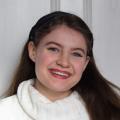
A MAN with an aggressive brain tumour who was weeks away from death is marking 40 years since his life-saving operation.
Mark Winterbourne was just 15 years old when his school grades and health suddenly plummeted without warning.
The former Hanson School student received a note from school about his teachers’ concerns.
“I was in the top class,” Mark, who grew up in Wrose, said.
“I was getting ready to do my exams. My work took a nosedive.
“I was coming home from school and just falling asleep. There was a photo of me and my family, it was in the Lake District, I’m fast asleep. When you look at the picture I’ve got bright red cheeks and it’s the middle of summer. At that point I had about six or seven weeks to live. It’s only in hindsight I know that.”
He added: “I went to the local GP and they said we think it’s migraines.
“Nobody had ever heard of brain tumours.
“I was having tea, going upstairs and coming back down asking what’s for tea.”
After another week of illness, the school sent Mark home with another report about their worries.
Mark’s friend also warned his mum.
“My mum stood up to the doctor and said there’s something wrong with my son and I’m not leaving this office until we find out what this is,” Mark said.

Mark was sent to Pinderfields Hospital, Wakefield, where his parents faced a nightmare dilemma.
There were two options: a short operation with a chance of surviving six to eight months or 12 hours of high-risk surgery offering a 10-year life expectancy.
“They sat my parents down with a bottle of whisky and said it’s urgent,” Mark said.
“Neurosurgery was in its infancy.”
His late mother pushed the neurosurgeon to go ahead with the second choice.
“It was an absolutely horrendous experience for them,” Mark said.
“The journey from Bradford to Wakefield, they made it three times a day, every day, for seven-and-a-half weeks.
“I felt very much like a guinea pig.
“I remember the day they came to get me out of there. I struggled to walk, I was lucky to be able to walk. It affects everything. The number of tests I went through afterwards. I wanted to go back to school.
“I feel grateful that my mother pushed and pushed for the right decision. In the end it worked out.
“The whole school came to a standstill. The headteacher stood in front of school. It was so rare.”
Neurosurgeons fitted Mark’s brain with a hydro catalyst shunt - a tube that drains away cerebrospinal fluid, which helps perform the body’s vital functions.
Surgeons could not remove the tumour, instead clipping it in order to block the blood supply.
Mark said: “Because of the time span I’ve outlived the shunt. It doesn’t work anymore. It causes problems now and again but my body’s learnt to drain itself. You can hear it.
“None of the neurosurgeons want to touch it.”
Mark returned to school the following year and passed every single exam.
Inspired by his grandfather’s photography, he went on to study at South Devon College and the University of Bristol.
After his dreams of joining the RAF were dashed due to the tumour, he served for many years in West Yorkshire Police.
All the while, he continued to follow his passion for photography.

Now 55 years old, Mark’s work has appeared at the National Museum of Photography and even earned him the Queen’s Award.
He has photographed celebrities - including runner Mo Farah - and captured football grounds, airports, running events, and weddings.
Charity work also became a big part of his life.
Mark said: “I set myself a bucket list when I was 16. I wanted to fly a plane, photograph famous people, meet famous people. 40 years later, I’ve done everything on that list.
“I’m so lucky, it puts a certain element of value into your life when you wake up in the morning, when you go to sleep, throughout the day when you’re thankful for everything around you. You appreciate things, people, you’d probably just pass by. That’s one of the reasons why I’m a photographer.
“It made me who I am. It made me into this person that wants to give rather than take.
“You value what you hear, see, taste.”



Comments: Our rules
We want our comments to be a lively and valuable part of our community - a place where readers can debate and engage with the most important local issues. The ability to comment on our stories is a privilege, not a right, however, and that privilege may be withdrawn if it is abused or misused.
Please report any comments that break our rules.
Read the rules hereLast Updated:
Report this comment Cancel